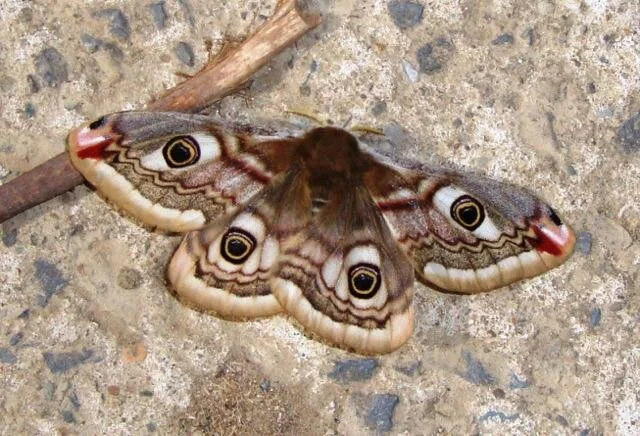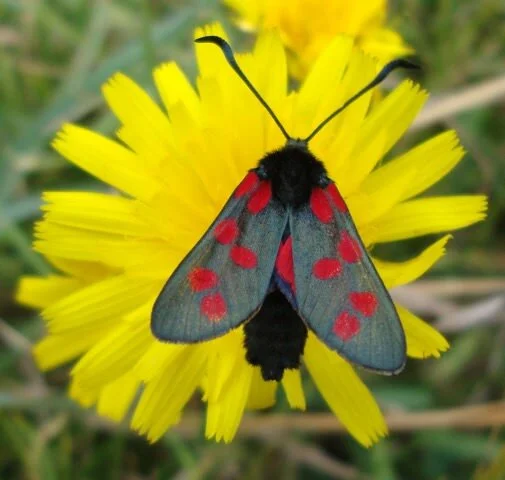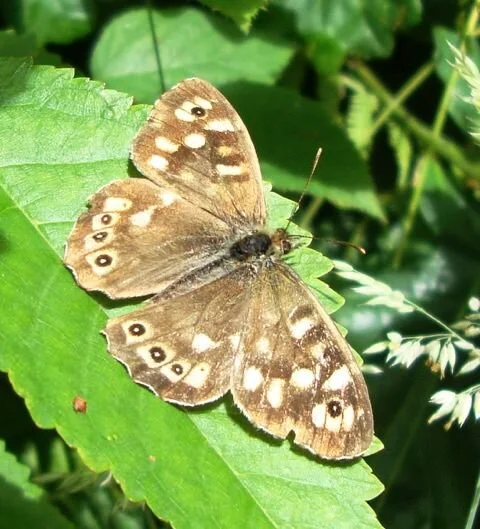When you are a child you notice the small things in life because you are closer to the ground.
Emperor moth
Playing at the edge of my father’s flower garden, I was face-to-face with bees and hover flies, with butterflies, and with ants, the red ones that gave a fiery bite, and black ones that were larger but harmless. I didn’t think about them much but every summer I was on intimate terms with insects, more so in some ways than with humans.
As you grow, however, you move physically above this intense miniature world and for the most part forget about it, at least I did, except for glancing at a butterfly because of its colourful wings, or keeping a wary eye on a wasp which might be a threat.
Instead I turned to birds and have been a sporadic birdwatcher all my adult life. These days, though, I tend not go out with binoculars and a field guide. Over the past thirty-five years birdlife has declined drastically around here, and once common species like the greenfinch and lapwing have become rare sightings, which is disheartening.
Six spot burnet (cinnabar) moth
In recent summers, therefore, I have found myself turning again to the world of insects. My year’s stint as a poet-in-residence at Oxford’s Museum of Natural History may have had something to do with this. The Museum has a collection of some 3.5 million insect specimens, curated by a team of entomologists. This includes a million British specimens. Many are type specimens, that is, the first examples of a species to be identified and named, to which all other specimens must be referred.
It was fascinating to open drawer after drawer of pinned butterflies or beetles each with a yellowing slip of paper, often written by one of the great nineteenth-century naturalists, including Darwin and Alfred Russell Wallace—specimen after specimen, many of them faded now, but retaining something of the glory of the insect world.
I think that must be what started me off, so that now in summer I bend close to our flowering plants and bushes to reacquaint myself with the world I knew as a child. Not that I am any good at identification. I have field guides to butterflies, moths, beetles, and dragonflies, but apart from being able to name a dozen or so butterflies, I have largely given up on attempting to identify what I see.
Try sorting out the Histeridae family of beetles in the field, or even worse the Geometridae moths, and you’ll see what I mean—and forget about bumble bees.
Yet each summer now I peer at flowerheads in the garden and lanes to examine the fine detail of flies, butterflies, bees and wasps, lifting stones to watch the scurrying complexity of an ants’ nest; beetles seem to be rarer, and I don’t see many of those.
It is a world facing two ways, like all of nature— ‘Joy! Help! Joy! Help!’ sing Ted Hughes’s skylarks, and the ‘help’ part is particularly relevant to the vicious world of insects, as it seems, at least, when looked at with human eyes.
Early one morning in summer, not so long ago, I was walking to work when I saw something I have never seen before or since. About a metre ahead of me I glimpsed two small bodies as they collided and fell to the ground. Curious, I knelt down to have a closer look, and there was a tiny wasp of a species I had never seen before, grappling a fly twice its size. It must have injected the fly with some kind of paralysing agent because the fly wriggled but was helpless as the wasp proceeded to butcher it, snipping off its legs one by one, then its wings, head, and thorax, until it was left with its throbbing abdomen which was still larger than the wasp.
To my amazement, the wasp then grappled this load like a Chinook helicopter and with evident difficulty because of its weight, took off and flew lumbering away. Had I been ten seconds earlier or later, I would not have seen this. I walked on in the cool air of an apparently peaceful summer morning.
Being human, it is tempting to see great cruelty in this, but cruelty implies intent and that is a human attribute. We can be cruel, insects can’t. They live by instinct, programmed to do what they do. Just like the two wasps this summer who flew like bullets from the nest in our shed and stung me on the forehead. It was so quick I had no time to duck, and it left me shocked. It seemed ‘personal’, but of course it wasn’t because insects are little more than living machines.
But then there is the ‘joy’ part of Ted Hughes’s equation. A few years ago I planted a buddleia, a shrub which grows quickly, and now each summer its cones of lilac flowers attract sometimes up to a dozen butterflies—red admirals, tortoiseshells, peacocks, large whites, probing the tiny flowerlets with their spring-coiled proboscises; there are flies, too, and honey and bumble bees.
Most years, elsewhere in the garden, there are one or two commas, and in the lanes, meadow browns and speckled woods. There is a richness in the symmetry of their wings and the wonderful depth of colours which no doubt only humans delight in. Though who knows how butterflies perceive their world?
One other thing I like about insects: each summer there is always something new—species of flies I am sure I have never seen before; and just occasionally a larger insect, like the emperor moth I came across sunning itself in the lane with its stunning four ‘eyes’ on a field of variegated grey.
It is November now, and the only insects around are swarms of tiny flies that must breed in the hedgerows, emerging in the warmth of a weak winter sun to live for a day. They are too small and dash about too erratically to be seen clearly.
Many, many insect species are in freefall now toward extinction. One senior entomologist at the Museum of Natural History told me he thought that within a couple of decades in Britain there will remain only one or two robust generalist species in each genus.
I can remember back far enough—to the 1940s and ’50s—to know that the decline of insect life in these islands has been catastrophic. But next summer I will be out there again bending closely to examine these extraordinary lifeforms, so alien to ourselves and so endlessly fascinating, certain that I will see something I have never seen before.



